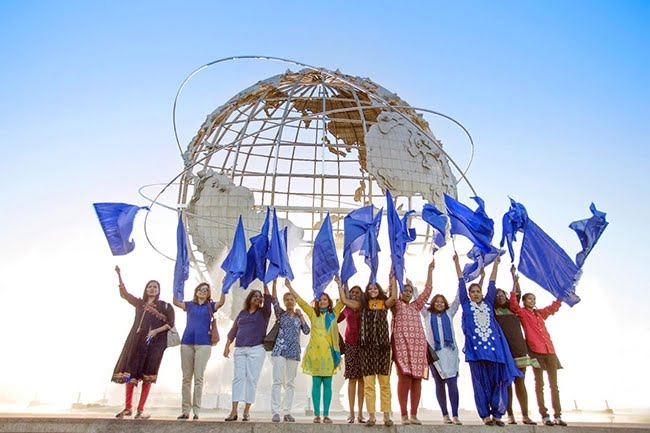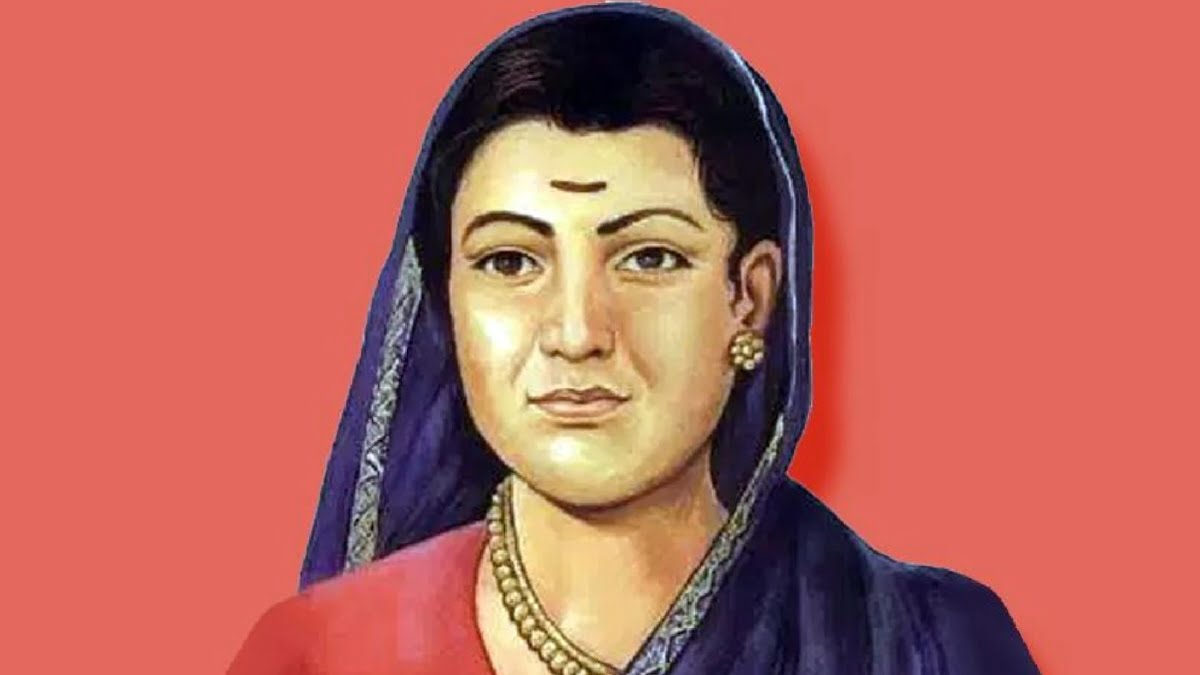An elementary reading of feminist literature and politics in India reveals that Savitribai Phule was the first female teacher and social reformer to implement ‘intersectionality‘ in its most practical sense. She opened the gates of secular education to women belonging to all caste and class strata of the Indian society. It felt encouraging to begin this essay with an example of India’s foremost feminist icon in India, who, along with her husband Jyotirao Phule and friend Fatima Sheikh, fought tirelessly against the feudal caste system and discrimination. Although what wasn’t natural was the erasure of her name in my history school textbook under the section on ‘brave female reformers’. As a teenager, the reality of her name being routinely absent due to her social position as a ‘lower-caste woman’ had not dawned on me. I was unaware of the struggles Dalit women had battled due to their caste position.
Neither my school textbooks nor teachers addressed the topic of ‘feminism’ (forget the Dalit standpoint in feminism). Fortunately, what stayed with me was the memory of Bimla’s narration of her caste, class and gendered struggle. Bimla works as a ‘manual scavenger’ in the overcrowded urban village of Mahipalpur situated in New Delhi. A short conversation with her became an entry point for my curious mind to raise two important questions:
1. What is a Dalit feminist standpoint?
2. Why is it coined as a term separate from ‘feminism’?
The concept of Dalit feminist standpoint is derived from the concept of ‘standpoint theory’, which refers to a feminist school of thought born from Marxism, arguing in favour of the production of knowledge that stems from social epistemological positions. Dalit feminist standpoint refers to a spectrum of knowledge consisting of individual testimonies of marginalised women’s experiences within the larger social structures.
Formation of the Dalit Feminist Standpoint
The concept of the Dalit feminist standpoint is derived from the concept of ‘standpoint theory’, which refers to a feminist school of thought born from Marxism, arguing in favour of the production of knowledge that stems from social epistemological positions. The emancipatory potential vested in the Black feminist standpoint encouraged several narratives by Dalit women to produce feminist knowledge from their own vantage points – considering how Dalit feminists too, are not a homogenous entity by themselves. Dalit feminist standpoint, therefore, refers to a spectrum of knowledge consisting of individual testimonies of marginalised women’s experiences within the larger social structures.
A Dalit feminist standpoint gives prime importance to “difference” as a factor. Therefore, the concerns of caste and gender get transformed as the main facets of the Dalit women’s mobilisation. The movement found its first autonomous expression through the formation of National Federation of Dalit Women in New Delhi, 1995.
The emergence of the movement can be traced in Jotiba Phule’s writing on the intersecting and various ways through which Brahmanical patriarchy oppressed different women, which started a revolution within the women’s movement in India (Phule 1991: 111:14). Thereafter in 1916, Dr. B.R Ambedkar, published a paper called Castes in India, which engaged with the prevalence of ‘endogamy’ in the Indian society (the principle or custom of marrying within a particular group as the basis of the caste system). Endogamy functioned by maintaining control over women’s sexuality and lives, making it the basis of the caste system. The practices of sati, enforced widowhood, denial of clothing to women from the marginalised communities, and ‘child marriage’ are all examples of the same. Ambedkar’s powerful articulation, amongst other unsung and unheard Dalit women’s writings, highlighted the gendered gap in literature or one could say, the sad realisation that ‘caste’ as a marker of difference had not been welcomed in the women’s movement in India as much it ought to have.
It was only post the 1990s that the feminist politics witnessed a radical turn with Dalit women beginning to represent their concerns and ideology separately from ‘upper-caste’ feminists. A student of Jotiba Phule in his classroom 1855, Muktabai Salve, a Mang girl who wrote about the “grief of Mahar and Mangs” specifically underlining the difference in how upper-caste women and Dalit women gave birth, said – “Our women give birth to babies and they don’t even have a roof over their heads. How they suffer rain and cold! Try to think about it from your own experiences.” (Tharu 1991: Bhagwat 1997: Uma Chakravarti 1998)
Within the backdrop of the ideological differences between upper-caste feminists and Dalit feminists based on their different approach in addressing and situating ‘caste’ within the women’s movement, the call for a ‘Dalit feminist standpoint’ by Dalit feminists emerged.
Within the backdrop of the ideological differences between upper-caste feminists and Dalit feminists based on their different approach in addressing and situating ‘caste’ within the women’s movement, the call for a ‘Dalit feminist standpoint’ by Dalit feminists emerged.
Dalit Feminist Historiography
A simple research on the subject exposes countless articles, essays and papers pointing the ‘neglect’ that the Dalit literature and Dalit feminism received from the mainstream feminism and the media. One such news article from 2016 pointed towards the CBSE’s action to remove entire history of the Nadar community’s caste struggle on removal of breast tax since they were forced to keep their upper bodies uncovered (to pay respect to the so called upper castes) by the caste council of the Nairs of the state of Travancore in the early 1800s. There are countless examples I could state on the erosion of Dalit struggles and historical perspectives in mainstream textbooks, although I am glad to witness a growing engagement of feminists (both Dalit and non-Dalit) with Dalit feminism which aims to cover such gaps and loopholes in the dissemination of Dalit literature today.
Moreover, to trace the construction of identities, it requires one to engage with historiography. In India, the non-Brahmin women’s histories have often been neglected, which otherwise was populated by masculine and upper-caste narratives of nationalism, imperialism and communalism. That is when the feminist historiography stepped in, and in the words of Vaid and Sangari (1989), “Pulled out the hidden history swept under the liberal carpet of reforms.” Rajni Tilak has also expressed how the mainstream women’s movement did not adequately incorporate and invoke the ideals of Savitribai Phule, Ambedkar and Jyotiba Phule.
Therefore, revisioning historiography from a Dalit feminist standpoint brings to light important turns in the women’s movement in India – firstly, how Dalit women as ‘subjects’ were focused on only after 1990s by what was the ‘initial’ women’s movement in India. Secondly, the focus on the engagement with Dalit women’s experiences and life testimonies, and finally, Dalit women’s agitation to fight their marginalisation in literary and political circles due to their doubly-oppressed position, owing to ‘Dalit patriarchy’ as discussed by Urmila Pawar, Bama, Gopal Guru and Anand Teltumbde, to establish speaking on their own, and for establishing a standpoint varied from each other as well as from the upper-caste’s.
In the article, ‘IN HER OWN WRITE: Writing from a Dalit Feminist Standpoint‘, Uma Chakravarti captures the shift in Dalit women’s agency from speaking through interlocutors to publishing and speaking on their own in front of national and international audience.
Speaking
In the article, IN HER OWN WRITE: Writing from a Dalit Feminist Standpoint, Uma Chakravarti captures the shift in Dalit women’s agency from speaking through interlocutors to publishing and speaking on their own in front of national and international audience. She cites the example of Virumma – a Dalit woman belonging to the Paraya community. In narration of her life to her interlocutor Josiane Racine, Viruma is careful to emphasise the difference in her social location from the interlocutor’s. Her narration is instrumental in helping the readers grasp how identities are shaped at the intersections of caste, class, labour, gender and power relations within the village and state. She says, “In the time of Kaliyuga, Dalits can go to school, become teachers and so make it possible for Dalit children to have teachers who are not biased against them, have access to dispensaries and hospitals, vote, and therefore be wooed by political parties.“
Viruma couldn’t write herself, therefore was dependent on Racine to tell her story but since the 70s and 80s, Dalit women have been vociferously mobilising to tell (and write) their own stories. The role of the ‘interlocutor’ as reflected in Uma Chakravarti’s article stands problematic to the Dalit women today. The appropriation of Dalit and Bahujan women’s voices by the upper-caste feminists has been a central challenge for the movement. According to Gopal Guru, Dalit women’s social location provides them an epistemic advantage to reflect on social realities through their lived experiences. Hence, he argues in the favour of and need for Dalit women to talk differently by focusing on the “difference in external factors (non-Dalit forces homogenising the issue of Dalit women) and internal factors (the patriarchal domination within the Dalits).” Dalit women establish difference on the lines of being lower caste, from facing class exploitation and as well as sexual violence on their bodies and family honour.
Also read: In Conversation With Dr. Fatima Burnad: Where Dalit And Feminist Activism Meet
Sexual Violence
Despite Article 17 in the Indian constitution abolishing the practice of untouchability, there continues to be a prevalence of sexual violence on Dalit women’s bodies, in addition to caste-based atrocities in general. According to the 2016 National Crime Records Bureau data, of all crimes committed against the members of the Scheduled Castes, the most is against Dalit women. The data also points that over four Dalit women are raped every day.
In 2007, Dalit feminists revolted against upper-caste feminist argument in favour of continuation of ‘bar dancing’ and that further implied the difference in how Dalit and upper-caste feminists approached the issues of gender and sexuality. Shailaja Paik, in her EPW article, critiques how Joanna Liddle and Rama Joshi’s claim that Dalit women experienced more sexual independence is a misguided glorification of the history of sexual slavery and exploitation that the Dalit women were subjected to, to maintain the Devadasi system.
In 2014, perpetrators raped and murdered two Dalit girls for demanding an increase of three rupees in their salary from their upper-caste employer in Badaun, Uttar Pradesh. And most recently, on July 1 2020, an upper-caste man, Arjun Mishra, raped and murdered a minor Dalit girl for plucking mangoes from his orchard. Whenever Dalit women resist their exploitation in the caste structure, they face atrocious repercussions, mostly in the form of sexual violence and when not that, then as physical acts of violence, verbal abuse, etc., almost as if Dalit women’s bodies are the most dispensable in our society.
I believe that the emancipatory project of a Dalit feminist standpoint cannot materialise unless the approach is adopted by upper-caste feminists as well. Scholars like Uma Chakravarty, Sharmila Rege and V.Geetha prove to us that it is not just Dalit women’s autonomy to question the caste structure.

In conclusion, I believe that the emancipatory project of a Dalit feminist standpoint cannot materialise unless the approach is adopted by upper-caste feminists as well. Scholars like Uma Chakravarty, Sharmila Rege and V. Geetha prove to us that it is not just Dalit women’s autonomy to question the caste structure. The non-Dalit feminists hold the responsibility to question casteism as much as Dalit women do, albeit from their specific standpoints and lived experiences. I do not argue that non-Dalit feminists speak on ‘behalf’ of Dalit women and appropriate their struggles. The statement simply refers to the fact that caste as a structure exploits all womxn at different levels. And, a mindfulness of this fact would guide womxn from all strata to not just be allies of the Dalit standpoint feminism, but also constantly reflect and evaluate how, even though in different degrees and measures, they are also the victims of caste hierarchy and not above this oppressive structure.
Featured Image Source: Diligent IAS
About the author(s)
Shainal Verma is a 25-year-old Ph.D. scholar at IIT, Delhi. Having pursued a B. A (Hons) in Journalism from Delhi University and Masters in Sociology from Jawaharlal Nehru University, she felt it was time for her to pursue what she has been most passionate about- voicing the lived narratives of Dalit women. Her research interests include re-theorizing Dalit feminism, intersectionality, popular culture, and casteism in educational institutions. Her favourite hobbies include writing poetry, art and craft, baking and dancing on Britney spears on odd days.







Well written piece. Keep up the good work.
Interesting article. Just a point of clarification – the Shanar community belongs to the OBC castes and do not identify as dalits.